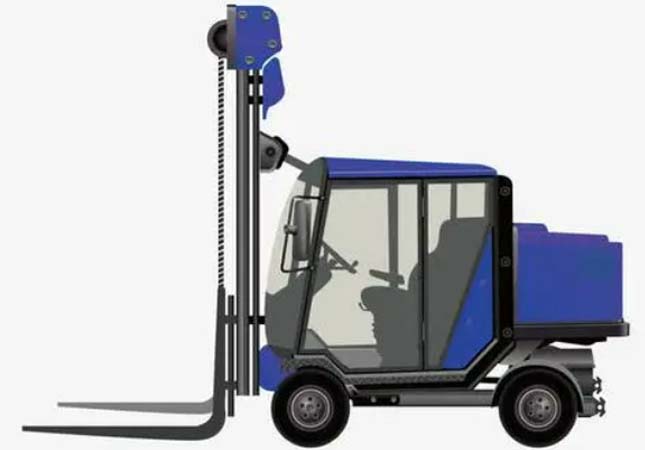Forklift is a kind of industrial handling vehicle, which refers to a variety of wheeled handling vehicles for loading, unloading, stacking and short-distance transportation operations of palletized materials. Among various material handling equipment, the electronic forklift and hydraulic forklift are widely used in downstream industries, which the electronic forklift also be called motorized forklift, for transporting the heavy materials in a safer operation. The International Organization for Standardization(ISO/TC110) catheterize it as industrial vehicle. Forklift is commonly used for the transportation of large objects in warehouses and is usually driven by fuel engine or battery. Manufacturing and logistics industries are the 2 main demanders for forklifts with the combined demand accounts for about 75% of the total demand of forklift downstream industries. Overall, forklifts cover a wide demand range with stability.

In 2019, the forklift industry not only has to cope with the pressure of adjusting to fit the rapid growth in previous years, but also has to face the influence from trade friction between China and the U.S., and the improvement of environmental protection requirements. Statistics from the Industrial Vehicle Branch of China Construction Machinery Industry Association show that China's forklift sales were 608,000 units, up 1.8% compared with the same period in previous year, of which domestic sales were 456,000 units, up 5.9% compared with the same period in previous year; China's forklift export sales accounted for 40.7% of the global total sales in 2019, becoming the world's main consumer market for forklifts.
In 2020, benefiting from the rapid control of the domestic COVID-19 epidemic, domestic manufacturing and logistics industries were able to recovery in a short time so that the market demand for forklift grows rapidly. The cumulative sales in 2020 reach 800,239,000 units, up 31.5% compared with the same period in 2019.
In the international position, with the economic development of emerging market countries, the world forklift industry gradually shows the trend of shifting to Asia and other emerging market countries in the world. In domestic position, the center of gravity of the market will shift northward and forklifts will be used in new fields. The enterprises in the Pearl River Delta region have a stronger awareness of using forklifts, especially some Hong Kong and Taiwan-invested enterprises, coupled with the fast economic growth rate and strong comprehensive economic strength in certain region in the early years, so the sales of forklift trucks in that region have been in the forefront of the country. However, the Yangtze River Delta region has become a hot spot for a new round of Chinese and foreign investment and has rapid economic growth, so the center of gravity of the forklift market will further shift northward in the future.
Motorized Forklift
Motorized forklift can be divided into Electric forklifts, electric counterbalanced forklifts, electric ride-on storage forklifts and electric pedestrian storage forklifts, and the main type of internal combustion forklifts is internal combustion counterbalanced forklift trucks. Compared with internal combustion forklifts, electric forklifts have lots of advantages such as less noisy, lower energy consumption and more environmental friendly, also are suitable for narrow sites, indoor and outdoor with more flexibility, and they are simple and low cost maintenance and more durable, with easy operation for workers to handle.
Lithium Battery
Domestic lithium battery began to be applied to the market in 2016, and entered a rapid development period in 2019. In 2018, the research and development of fuel cell modules suitable for forklifts began, and the enterprises began to actively deploy fuel cell forklifts. In 2020, new energy forklifts such as hybrid, lithium-motorized forklifts, and LNG/LPG are launched in batches by enterprises, and intelligent AGV vehicles and fleet management systems were fully introduced to the market. The output value of new products has increased by more than 13% compared with previous year.




